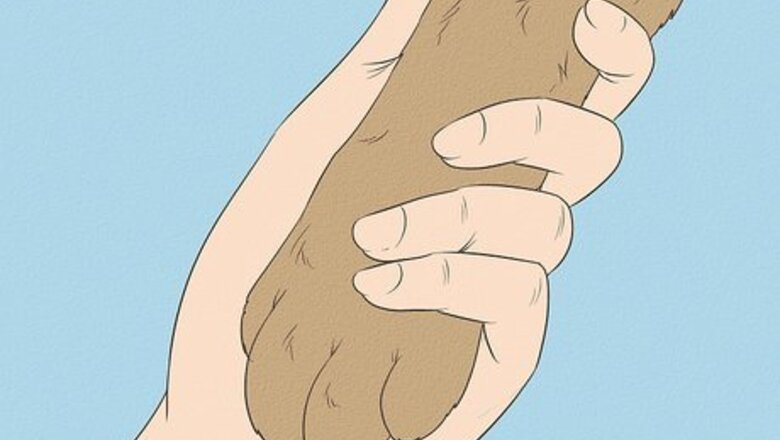
views
- Introduce the clippers slowly and handle your dog’s paws regularly to make them desensitized to the nail trimming process.
- Trim 1-2 nails a day if your dog won’t sit still for long. It's perfectly okay if it takes a week or more to cut all of your dog's nails.
- If your dog still fights during nail trims, consider switching to a Dremel grinding tool or taking them to a professional.
Getting Your Dog Used to Nail Cutting
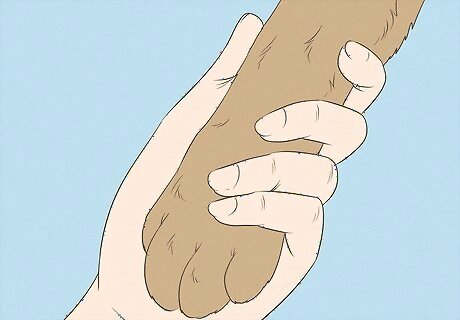
Handle your dog’s paws. Your dog’s paws are the most sensitive part of their body. In the wild, a wounded paw could be the difference between life and death. As a result, your dog is likely to pull away when you handle their paws. You can overcome this by gently touching your dog’s paws every day. Pet them, wiggle their toes, and show them that you don’t mean any harm. This process may take days—or even weeks. Take your time and be super patient! A note on this process: For each step here, wait to advance to the next portion of the process if your dog is still pulling away, snarling, barking, or fighting. It’s better to take your time now than to jump forward and make this process even harder.
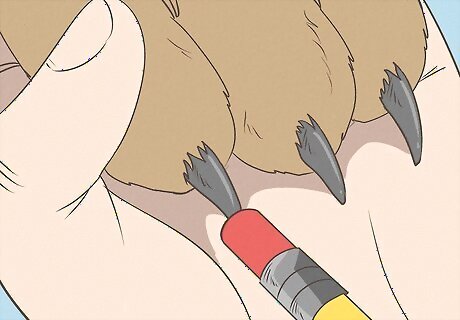
Use a pencil eraser to simulate nail cutting. Once your dog is used to having their paws handled, grab something small and semi-soft, like a pencil eraser or sponge. Start pretending to cut your dog’s nails by rubbing the soft item against the tip of each nail. Take breaks if your dog starts fussing, and move on to the next step once your dog is totally fine with the eraser or sponge. If your dog seems extremely anxious or hesitant with the eraser or sponge, start introducing treats. Reward your pup for sitting still and relaxing when you handle their nails.
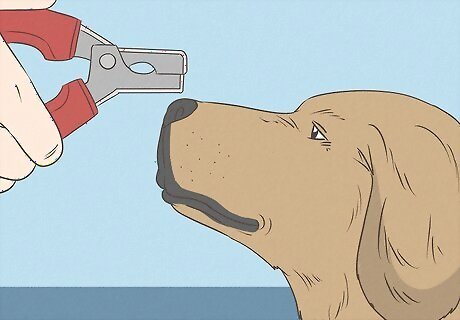
Introduce the clippers but don’t use them. Hold your nail clippers out for your dog to sniff, gently lick, or poke and prod with their snout. Set the clippers on top of their paws, let them swat at them, and just get your dog used to the item. Once the clippers no longer bother your dog, you can start cutting their nails. If your dog seems hesitant around the clippers, start pairing the clippers with treats and high praise.
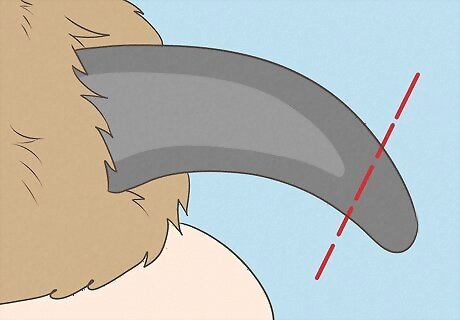
Clip the first nail at an angle while offering lots of praise. Lancy Woo, a certified pet groomer and owner of a pet salon, says, “Hold the first nail you plan on cutting with your thumb and pointer finger near the point where the nail curves. Take small cuts until you see the translucent white or black dot. By holding the nail firmly, you won’t over-cut if your dog jumps.” That white or black dot inside of the nail is the quick. Take care not to trim it, as it will cause bleeding. If you do accidentally cut the quick, don’t freak out (it’s a lot of blood, but your dog probably won’t be in a lot of pain). Put their paw in a small container of cornstarch to stop the bleeding. Then, wrap the paw in gauze and apply pressure to give the nail time to clot. Aim to clip each nail at an angle that’s parallel to the ground so that you only remove the excess growth that would sit against the floor when your dog stands.
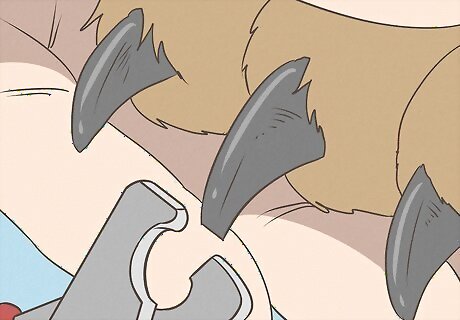
Do one nail at a time and stop when they start fussing. Continue providing treats before and after each nail as you work. If at any point your dog jumps away, barks, or reacts strongly, stop. Give your dog a few treats and pets to end on a positive note and try again later. If they’re fine though, keep clipping the rest of their nails. As licensed Veterinarian Natalie Punt puts it, clip their nails “however your dog best tolerate[s] it.” It’s 100% okay if it takes multiple days to finish all of your dog’s nails. That’s actually pretty normal for most dog owners.
Tips, Tricks, and Alternative Options
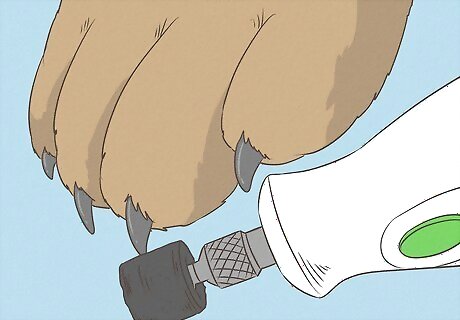
Switch to a Dremel tool if your dog hates the clippers. If your dog freaks out at the loud snapping sound of the manual clippers, pick up a Dremel grinder designed for nail cutting instead. Introduce the tool the same way you tried introducing the clippers. Then, try using the grinder to wear their nails down. The Dremel tool will make a consistent whirring noise that may be less alarming than the manual clippers. Using the Dremel also makes it easier to avoid nipping the quick since you’re trimming the nail slowly in layers instead of clipping a big chunk off all at once. The Dremel is probably not ideal if your dog doesn’t like having their nails handled and they seem indifferent to the noise of the clippers.
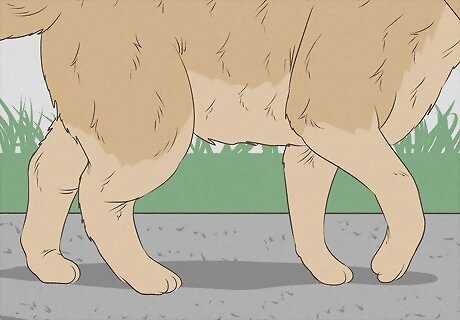
Walk your dog daily on concrete or asphalt surfaces. Veterinarian Natalie Punt explains that not all dogs even need to have their nails clipped if you walk them on hard surfaces: “Some dogs can be walked often on cement or concrete, which naturally files down the nails. It really depends upon the dog and what their activity and also kind of like substrate they exercise on, like cement or pavement.” If your dog regularly gets to walk or run around on concrete or asphalt and their nails never grow to the point where they’re pressing firmly on the ground and cause your dog’s toe to angle unnaturally, you never have to clip their nails! Be sure to moisturize your dog’s paw pads if you walk them on harsh surfaces and avoid concrete or asphalt on extremely hot days.
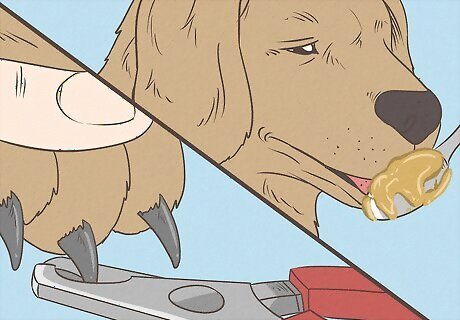
Enlist help to have a friend distract the dog. Sometimes, all a fussy dog needs is a healthy distraction. Ask your friend, partner, or roommate to scoop up some peanut butter and bribe the dog while you work on their nails. You may have seen a viral TikTok hack that involves wrapping cellophane around your head and putting peanut butter on it to get your dog to play nice while you work. The problem is that if you spook your dog unexpectedly, they might bite your face.
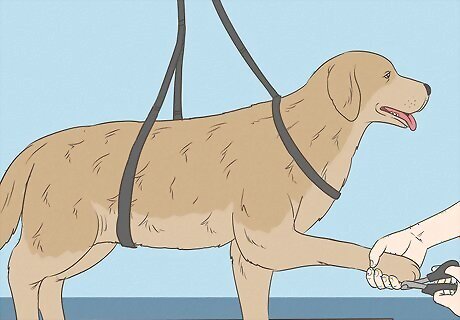
Use a no-sit loop to keep your dog from hiding their paws. A no-sit grooming loop is what professional groomers use. You loop the harness around the dog when they’re standing so that they can’t sit down or hide their paws. If your dog refuses to let you handle their paws, this is a good last-ditch solution. This may not make the nail clipping less anxiety-inducing for your dog, but if it seems like nothing is working, using a grooming loop to trim their nails is preferable to letting the nails grow to the point that they cause your dog pain.
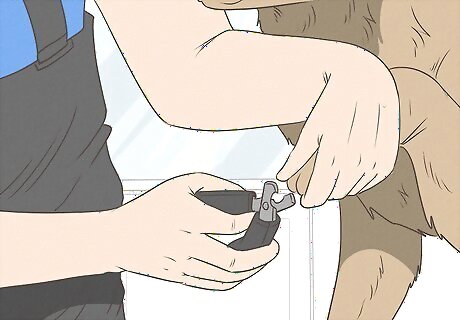
See a groomer or vet to have them cut your dog’s nails. You don’t actually have to cut your dog’s nails if it’s a problem for you or for them. Instead, ask your vet to cut your dog’s nails the next time you schedule a checkup. Alternatively, you can take your dog to a groomer to have their nails clipped! There’s nothing wrong with leaving it to a pro if your dog won’t play nice with you.




















Comments
0 comment